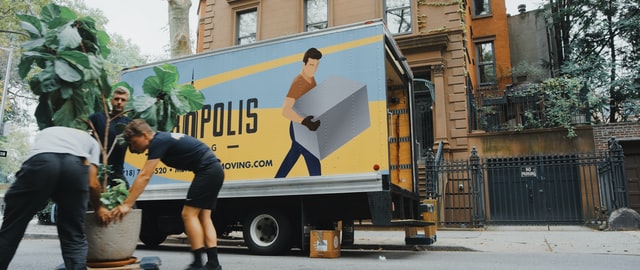Everyone moves or changes their location at least once in their life. There are many reasons why you might be moving to a new home. Whether you’re planning to move for university, moving for love, moving out of your parents’ home, relocating for work, or you’re just upsizing your current house, moving is a significant life event. Planning your next move in advance can make the process easier. From packing your belongings to choosing a mover and more, let’s take a closer look at how to best plan your move so you will have a smooth relocation.

Planning – planning – planning

The key to a successful move is to start planning as much in advance as you can. The more organized you are now, the smoother the move will go when the big day arrives. Keep these planning tips in mind to help make your move go smoothly.
- Make a packing schedule. Decide which days you’ll have some free time to start packing and doing some organization. You can begin to pack the items you don’t need right away in advance of your move. Things like artwork and décor can be packed many days or even weeks in advance. Make sure that you label each box once it’s packed, so you’ll know exactly what’s inside later. Making a packing plan now will help you feel better as moving day approaches, so nothing is left until the last moment.
- Plan to pack room by room. The best way to plan and pack is to do it for each room individually, one at a time, marking your boxes as you go. Leave your essentials out, such as bedding, toiletries, and basic kitchen items. Save the essential things you use most often for last since you’ll still need to use them every day up until the moment you move.
- Decide on a date. Pick a moving date and then plan to have enough time on that day to pack and head to your new home. If possible, you should try to take a day or two off of work so that you’re free of distractions. Moving is a huge event in life that requires a lot of physical and mental energy. Dedicating some time on moving day will allow you to entirely focus on the task at hand without any outside distractions keeping you from doing these important tasks.
How will you move?

When you’re moving to a new home, it’s crucial to think about how the process will go. Keep these things in mind as you get ready to plan the move.
- Moving company If you’re planning to hire a professional moving company, consider the costs. Many moving companies charge based on the number and size of items you need to transport and the distance between the two locations. For example, it will cost more to move a 3-bedroom home to another state than to move a 2-bedroom house to the next city. f you are looking to save some money, you can also opt for a cheap alternative like moving pods.
- Moving DIY You may decide that moving yourself and using your own vehicle is the best route. Remember that you’ll probably need to do some heavy lifting, so it’s best to have at least one or two other people with you who can help. Ask a few friends or family members if they’d be willing to help you move and make it a fun day with some pizza or dinner later. If you prefer to move alone, consider the amount of time and energy it will require.
- Rent a truck If your car is too small, you can also rent a moving truck to drive yourself. Rates for rental moving trucks vary based on the size your need as well as the distance you’re planning to travel. Shop around and look for rates online to find the best one for your moving needs.
Gather all the supplies you need for packing

Before you start packing for your move, make sure that you have all of the following essentials ready to go:
- Packing tape Use durable, quality packing tape that won’t come loose or tear during your move. It’s best to make sure that you have several rolls since you’ll probably need much more tape than you might think.
- Cardboard boxes You can purchase moving and shipping boxes or simply hang onto empty cardboard boxes until your move. Many grocery stores and retailers will also give you empty cardboard boxes free of charge. Make sure the boxes are in good condition and that they’re large enough to hold your belongings.
- Stretch wrap and bubble wrap These moving supplies are crucial to protect your stuff and help to prevent the breakage of household items and valuables. Wrap breakable items thoroughly with bubble wrap and secure them with packing tape to hold the bubble wrap in place. You can find these materials from wholesale packaging suppliers.
- Dolly A dolly is a wonderful tool that makes moving heavy items like furniture and appliances easier. You can purchase one at many local home improvement stores or rent one from a local moving company.
- Luckily, one insider trick that can solve these issues is using moving straps like the Shoulder Dolly®. These make any moving or lifting a breeze by allowing you to maneuver heavy objects (up to 800 lbs) across grass, rocks, or a room full of boxes, unlike a regular dolly which has very limited capabilities.
- Permanent marker Use a large black permanent marker to label your boxes. Write down which room the items will go into when you arrive at your new home. You can also use stickers or labels on your boxes if you wish.
- Utility knife These handy knives make it easier to cut tape and boxes while you’re packing and unpacking.
- Garbage bags Keep plenty of garbage bags on hand during your move. They’re great for throwing trash away while you’re cleaning up, but they’re also an excellent option to pack large blankets, bedding, and clothing, as well as furniture cushions.
Essential Packing Tips

Keep these important packing tips in mind so that your experience will be as smooth and easy as possible.
- Moving is a perfect time to get rid of junk and items you simply don’t want or need any longer. You can donate items, repurpose them, or recycle them if possible. Consider holding a garage sale to make some extra cash or sell your items online. Simply decluttering will make you feel better and reduce the number of things you need to pack.
- Disassemble large furniture in advance. Doing this will save space and make lifting and moving bulky items easier. Remove the legs from your furniture and place all of the hardware in a clear plastic bag, then attach it to the underside of the furniture with packing tape, so it’s easy to reassemble it when you get to your new home. Do your furniture disassembly early before the actual day of your move, so it’s ready to go.
- Always use durable, sturdy cardboard boxes when packing. Wrap your furniture and breakable items carefully to prevent damage. Don’t forget to reuse the cardboard boxes and keep them for storage or any future moves.
- Pack your belongings systematically. As mentioned before, leave the things you use the most out and save them for the very last moment.
- Clean all of your belongings before you pack them so when you arrive at your new home, all of the dust and grime will be gone, and everything will be fresh and beautiful. If you need help or feel overwhelmed, consider hiring a cleaning company for assistance.
- The same applies to your new place – make sure that you clean the interior and every room thoroughly before moving everything in. It’s much easier to clean an empty home than it is when it’s full of furniture and boxes. You can also start a home inventory now that you’re moving to a new house.
- If you’re not moving to the new home on the same day, consider renting a storage unit. This also applies if you’re planning to travel a bit before you move or if you just have too much stuff that you’re not ready to bring into the new place yet.
- When it comes to transporting your mattress, consider investing in a reliable mattress bag and securing it with straps or ropes to preserve its condition during the move.
Mistakes to Avoid When Moving

Keep these important mistakes in mind when moving so you can avoid serious headaches.
- Neglecting to mark your boxes will make it extremely difficult, if not impossible, to know what is what. You also won’t know which items are fragile or which boxes are heavy, so remember to mark each one after you pack it.
- Forgetting to change your address will lead to all kinds of problems. Ensure that you notify all of your utilities, the bank, and any services you pay bills to so that your mail will come to the new place.
- If you don’t plan ahead and allow enough time for your move, you’ll be stuck trying to do everything at the last minute. Not only will this make moving day stressful, but it also leaves a lot of room for mistakes.
- While it’s not mandatory, not considering moving insurance could lead to problems later on. Paying for moving insurance can ensure that all of your belongings are safe and protected during the move.

Are you ready for your moving day? Hopefully, these tips for packing and moving will help you plan and prepare for your move perfectly so you can start enjoying your new home as soon as you open the door. With the proper planning and some early packing, you can be sure that your move will be an easy, stress-free, and exciting event.




